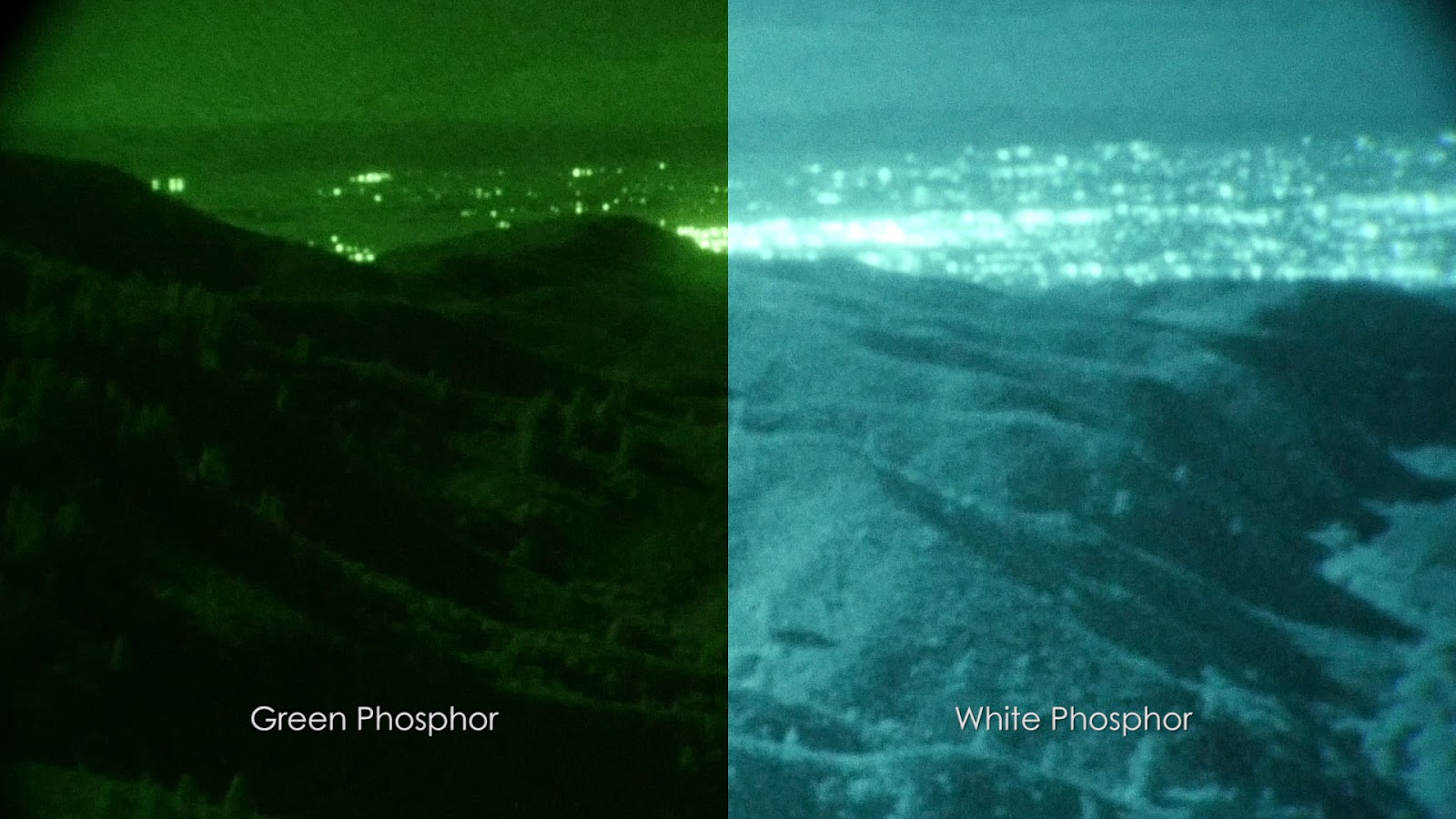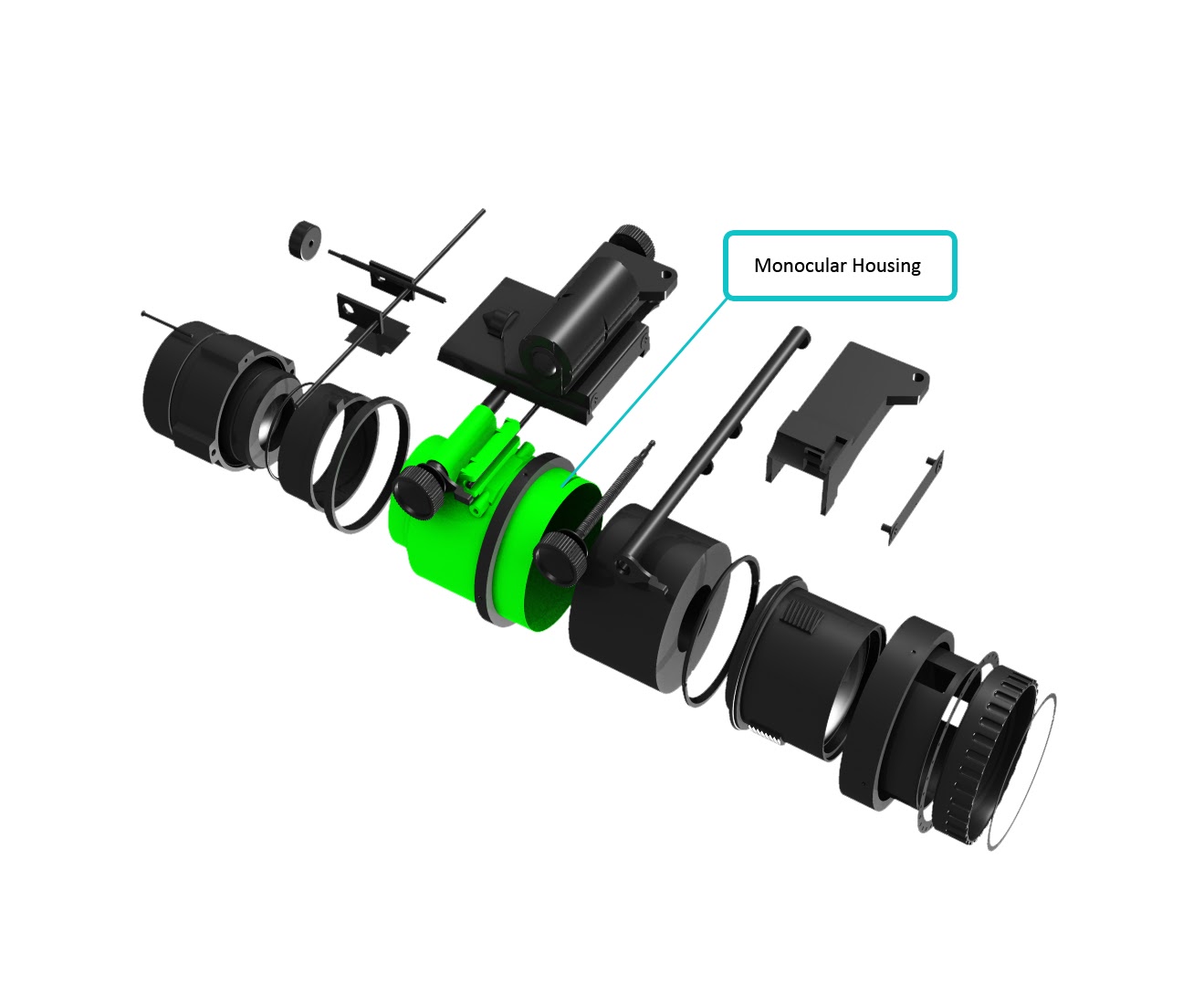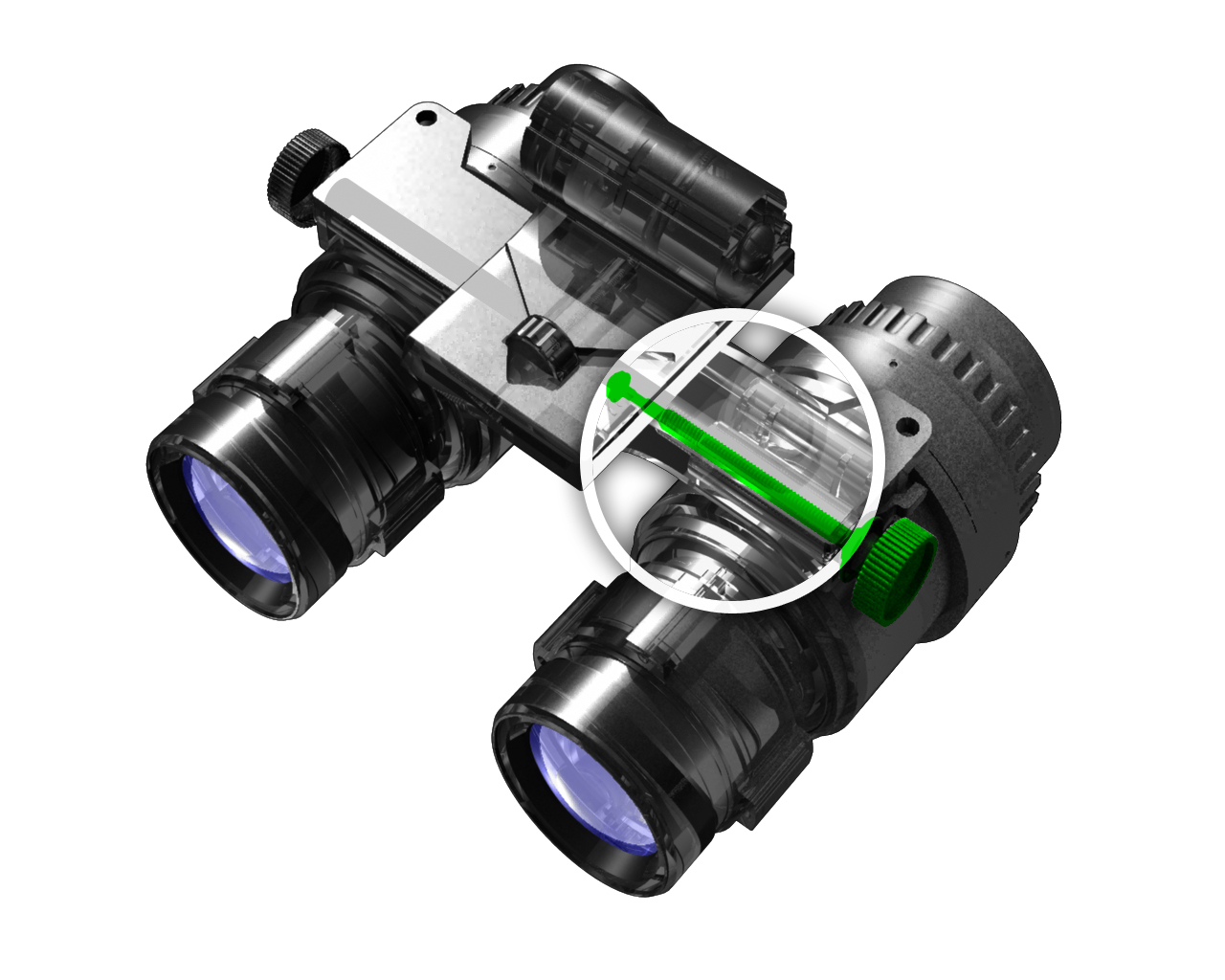|
Oct
03
2016
|
|
Posted 9 years 66 days ago ago by Admin
|
|

Imagine a future where helmet-mounted night vision goggles (NVGs) are replaced by light-enhancing contact lenses. While this might seem like some high-tech invention in the latest Mission Impossible movie, the idea itself isn’t fiction. Rather, researchers at the University of Michigan have developed a super-thin, graphene-based light detector that can see light wavelengths invisible to the human eye. This includes the thermal energy detected by NVGs that is amplified and rendered into human-viewable black and green/black and white images.
The reason this detector works is because graphene, consisting of a single layer of carbon atoms, can detect and react to the entire infrared, visible, and ultraviolet light spectrum. This system is not currently being used in conventional NVGs because graphene doesn’t detect enough of the received light to generate sufficient electricity to be directly amplified. However, the graphene detector’s power level can be sufficient enough to influence a higher power electric current close to the sensor output, which could be amplified and used to create a visible image.
For helicopter pilots, the thrilling possibility is that a graphene detector could be small enough to be truly wearable. "We can make the entire design super-thin," said Zhaohui Zhong, associate professor of electrical engineering and computer science at the University of Michigan. "It can be stacked on a contact lens or integrated with a cell phone."
That’s the potential quantum-leap future for night vision imaging systems (NVIS). In the present day, NVIS equipment and service vendors are working to advance current light amplification and viewing technology to provide a clearer, better defined, and more useful NVG experience for helicopter and fixed-wing pilots. Two of the standout NVIS companies in the aviation industry are Aviation Specialties Unlimited (ASU) and Night Flight Concepts. Although both are end-to-end NVIS solutions providers for helicopter operators, both companies have their own takes on how to offer these services most effectively.
Aviation Specialties Unlimited
ASU’s NVIS point man is Dr. Joseph Estrera, the company’s vice president and chief technology officer. Estrera has serious roots in NVIS, as he worked for almost 25 years with the development of electro-optical systems, such as image-intensified Aviator’s Night Vision Imaging System (ANVIS) night vision goggles, thermal imaging systems, and fusion imaging systems. ASU offers a full range of NVGs for pilots, but according to Estrera, that’s not all. “In addition to offering both white phosphor and green phosphor night vision goggles, ASU also offers FAA-certified night vision goggle lighting modification to commercial rotary- and fixed-wing aircraft cockpits supported by FAA-certified PMA NVIS lighting filters and components,” he says. This includes NVG products (AN/AVS-9) with a full range of ANVIS accessories and maintenance spare parts, plus full NVG maintenance and testing.

ASU also offers FAA-certified NVG pilot training and certification programs, plus FAA-approved aircraft certification of NVIS lighting modification through supplemental type certification (STC) process services. Estrera says, “In summary, if an organization is adding night vision capabilities, ASU can equip, modify aircraft, and train pilots and crews for full NVG operations.”
Night Flight Concepts
Night Flight Concepts (NFC) is another comprehensive provider of end-to-end NVIS equipment sales, installation, maintenance, and training services. In contrast to ASU, Night Flight Concept’s focus is on providing an integrated solution to night flying challenges, rather than breaking the challenge out into areas of specific NVIS equipment, training, and service/support. The company’s approach was nicely summed up in a past Rotorcraft Pro profile editor Lyn Burks wrote titled “Night Flight Concepts Takes Mystery Out of NVGs.” Night Flight Concepts President Adam Aldous says, “We offer NVG equipment, plus NVG pilot, crew member, and maintenance training.”
The company has grouped its solutions around three separately branded areas: Special Operations Airborne Resources (SOAR), Laser Armor, and Law Enforcement Air Support Entity (LEASE). “Each of these product areas integrate a range of technological elements to address specific situations,” says Aldous. “SOAR embraces highly specialized mission areas such as aerial firefighting, EMS, law enforcement, military, and SAR, with NVIS equipment and training playing a role in each. Laser Armor deals with a growing threat to pilots flying in U.S. airspace—laser-strike issues—while LEASE provides turnkey, cost-effective approaches to aerial (helicopter-based) law enforcement.”

Advances in NVIS
At ASU, the biggest advance in helmet NVGs is white phosphor Generation III image intensification technology used in the company’s AN/AVS-9 aviation NVG system. White phosphor provides a black-and-white moving image to the viewer, as opposed to the more traditional black-and-green images generated by green phosphor-based NVGs. Estrera explains the advantages for pilots: “This has introduced eye-popping next-generation enhanced imaging performance to the ANVIS goggles that has increased low-light-level performance and visual acuity to the pilot.” Such systems are also capable of protecting wearers from laser strikes.
This year ASU capitalized on their research and development efforts by introducing a battery pack with reduced size and weight for helmet-mounted NVGs. This gives the pilot enhanced ANVIS ergonomics through one-handed operation of the ANVIS goggle. “On the heels of this ANVIS goggle improvement effort, we have pushed to continually refresh the 30-year-old ANVIS goggle system technology itself and have embarked on the product improvement of the ANVIS helmet mount and battery pack,” Estrera added.


ASU is also launching the smallest night vision mission recorder for enhanced pilot training, which it has branded as “Ecliptus.” Estrera says, “We were able to combine a GoPro Hero 4 camera with military-grade night vision technology, providing the system operator with the wireless and recording capability of the most exciting action camera available with aviation-grade night vision imaging technology.”

Over at Night Flight Concepts, they are more interested in the adaptation of complementary metal–oxide–semiconductor (CMOS) multi-megapixel light detectors for NVG usage. While this terminology is certainly a mouthful—and even more difficult to write—it is already in widespread use for advanced still-camera and video systems. CMOS detectors could soon also revolutionize NVIS technology by increasing resolution and accuracy.
“When you combine CMOS with FLIR (forward-looking infrared radiometer) technology, you can end up with a very low-light camera system that can capture images in an electronic format, which can then be digitally combined and provide yet further resolving information to the user,” Aldous explains. “In addition, when you have a digital electronic image, you could share this information in real time to a command center for information verification or other intelligence gathering and observation. The end result would be more information that could be shared with more people.”
Such a sensor has already been developed by Sierra Pacific Innovations (SPI). Known as the CMOS Night Vision Sensor HFiS X26, the company claims the HFiS sensor module is the first operational CMOS camera that exceeds night vision performance criteria. SPI has installed this sensor in its X26 low-light imaging camera. This is an all-digital, tubeless NVG that offers a wider field of view than the traditional 40 degrees afforded by tube-based NVIS equipment. That said, the X26, and its low-light color companion X27, has yet to be offered in a wearable, helmet-mounted configuration.


In the more immediate future, ASU’s Estrera sees “more resolution and increased contrast though smaller microchannel plate (MCP) pores” in NVG light intensifiers. This will allow detected light to be amplified on a smaller, more information-intensive basis. “Right now the image intensifier is down to 5.5 micron diameter pores that produce a 64-72 lp/mm (line pairs/millimeter) limiting resolution ANVIS goggle,” he says. “I see it getting smaller. In 2009-2010, I was able with Dr. John Glesener to develop a 2 micron pore-sized image intensifier that achieved greater than 100 lp/mm.”
With this reduction in pore size, the result is an ANVIS goggle with greater resolution and richer contrast that will provide NVG wearers with more detailed and informative images. “This improvement will result in a better image for safer and more effective flying at night in all mission critical environments,” says Estrera.
Looking further ahead, NFC’s Aldous is hopeful that biology-based NVIS approaches may some day provide NVG users with far more accurate and wider field-of-view images with which to work. “We know that plants are light sensitive, and indeed use light-level detection to control their physical processes,” he says. “Imagine if this same form of light sensitivity could be harnessed to seeing in extremely low-light situations. We could get beyond the current NVG tube limits; ushering in a wide-angle form of NVIS that would be far more informative to its users.”

Again, like the graphene-based NVIS contact lenses described at the start of this article, such advances are still in the future. However, work is being done today to take NVGs and their related equipment well past the resolution, contrast, and field-of-view constraints that currently limit their capabilities. One day helicopter pilots may indeed be able to see as well at night as they do during the day by using NVIS contact lenses that detect light as easily as graphene, and work with light as flexibly as plants.